How does an account of Black women’s sculpture and Black women’s labor in the last two centuries offer a different understanding of the monumental that we have yet to adequately address in the ongoing public monuments debates?
In the history of western aesthetics, making monuments and being depicted in monuments are normally the purview of men. Rarely do women get to make or be in monuments, even more rarely Black women.
During the 1876 Centennial Exposition in Philadelphia, Edmonia Lewis, the first Black female sculptor to achieve international fame, crafted The Death of Cleopatra, a stunning 3,015 pound Neoclassical marble statue depicting Queen Cleopatra in the throes of death.

Lewis’ Cleopatra was represented as a woman with physiognomic features associated with white women, a fact that drew much acclaim for accuracy from white critics and disappointment from some Black visitors. The art historian Charmaine Nelson reads Lewis’ decision to race Cleopatra as white rather than Black as a strategic one. Given the association of Cleopatra with Blackness in the 19th century, it would not matter that Cleopatra was raced white, a viewer would still be able to make connections between Lewis’ Cleopatra and discourses of Black abolition. Cleopatra’s whiteness worked as a refusal to “facilitate the racial objectification of the artist’s body” and to insist, instead, on Lewis’ mastery of form.1 Since Lewis’ Cleopatra was Neoclassical and white, art critics could not accuse Lewis of inserting herself as a subject, nor could they criticize her skills as a sculptor. The tradition she mastered required adhering to implicit whiteness for Black genius to, quite literally, matter.
The Death of Cleopatra was held in storage for nearly a decade until purchased by a gambler to mark the grave of his deceased racehorse named “Cleopatra” in Chicago. After a century, the U.S. Postal service purchased Lewis’ sculpture in the early 1990s, eventually donating it to the Smithsonian in 1996. After 1875 Lewis' whereabouts and activities are unclear. Many of her later works are considered lost. Even the location of her final resting place is unknown, though official reports list her as living in Rome in 1911.
In 1926 W.E.B. DuBois wrote in the “Criteria of Negro Art” that “[t]here is in New York tonight a Black woman molding clay by herself in a little bare room, because there is not a single school of sculpture in New York where she is welcome…This girl is working her hands off to get out of this country so that she can get some sort of training.” DuBois might have been thinking of Augusta Savage, the gifted Harlem Renaissance sculptor whose scholarship to the Fountainebleu School of Arts in Paris was rescinded in 1930 when the committee discovered she was Black. Savage would eventually go to Paris anyway, returning to the U.S. and converting her Harlem studio into a school that gave free arts lessons to her community.
For the 1939 World’s Fair, Savage was the only African American woman to receive a commission from the Board of Design. Her 16-foot tall sculpture Lift Every Voice and Sing, also known as The Harp, was the most popular and photographed piece at the fair. It exists now only through photographs and souvenir replicas. Because Savage could not afford the bronze to permanently cast it, her plaster sculpture was destroyed at the end of the fair.
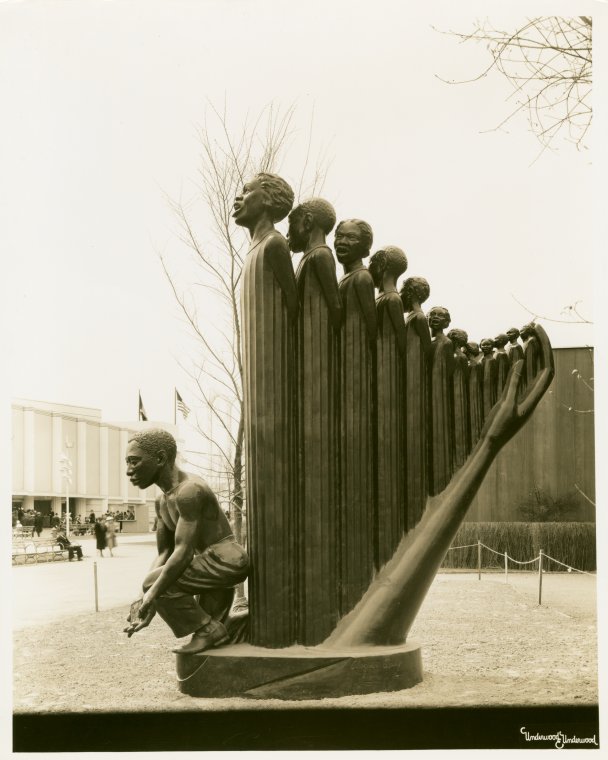

The Harp is primarily composed of an extended arm holding twelve singing figures. At the base of the statue, a figure kneels with outstretched hands and half-closed eyes. The kneeling figure’s outstretched hands mimic the hands that hold the figures, as if generously offering and inviting those who pass by to see this world yet to come. The singing figures throw their voices and gazes in all directions as if simultaneously seeing towards, hailing, and singing forth a world more deserving of their dignity and grace.
Simone Leigh’s Brick House, a 2019 commission for the new New York High Line, is a 16-ft sculpture of a Black woman with braided cornrows. Where one would expect eyes are soft indentations instead. The organs of vision rescind themselves from our view as if to indict a cultural blindness. The overdue arrival of Black women in the aesthetics of monumental form that coincides with the removal of racist monuments presents a seeming calculus of racial equality. But as Karyn Olivier’s recent essay makes clear, removing a racist piece of public artwork does not absolve a racist history and might, in fact, further efface a history of Black woman’s work. There is more to consider than taking down racist monuments.
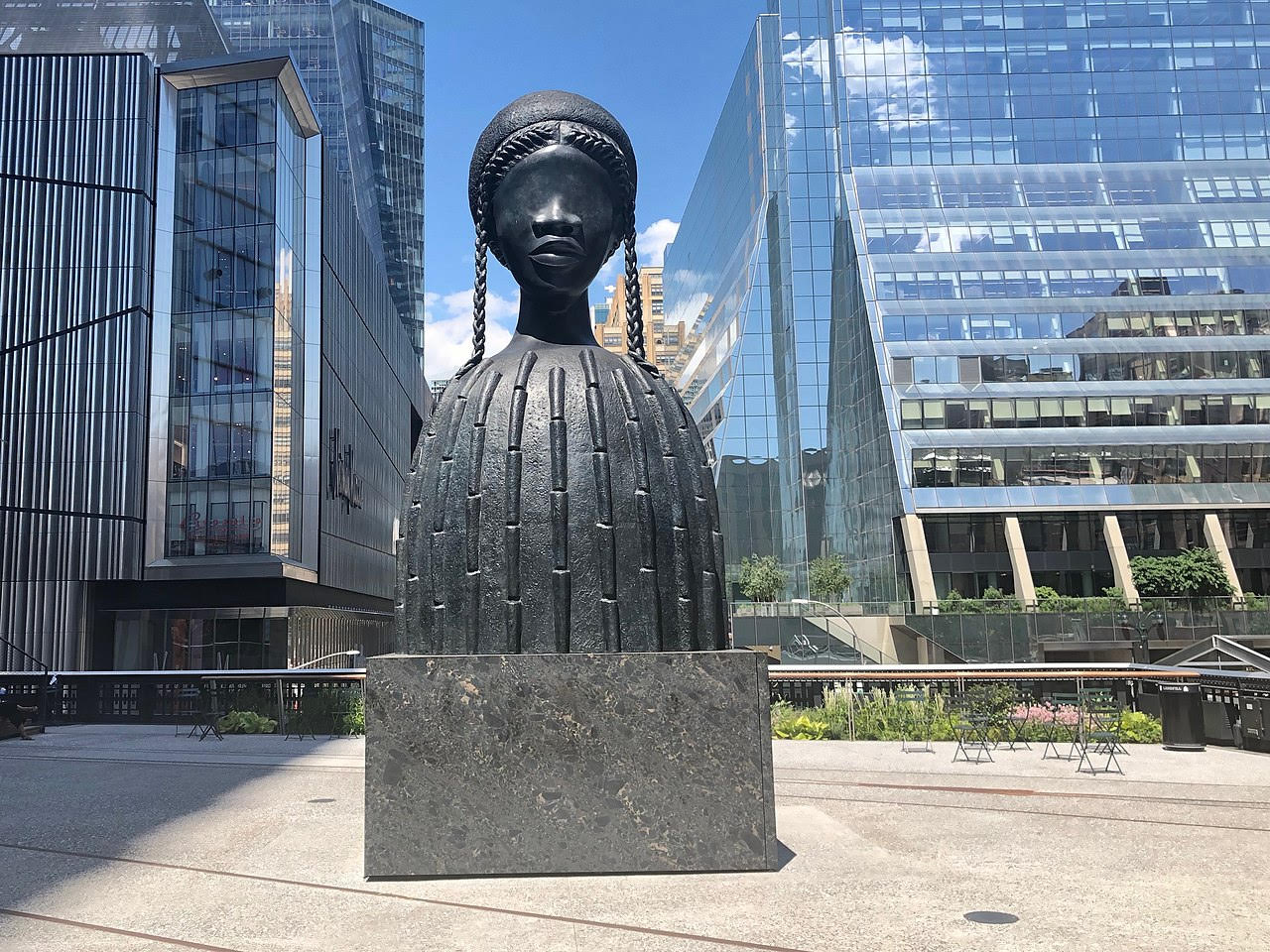
Leigh’s other sculptural works, like Jug (2019), Las Meninas II (2019), and Sentinel (2019) often merge the figure of the human body with the shape of jugs and huts. A poetics of the vessel, withdrawal, and shelter animate Leigh’s sculptures, forming what Harriet Jacobs, in her 1861 Incidents in the Life of a Slave Girl, described as a “loophole of retreat,” the title of the 2019 Guggenheim show honoring Leigh’s career. Rutted up in a small crawl space for seven years to escape her enslaver’s persecution, Jacobs was able to experience retreat and freedom even in the most constrained physical circumstance. The enlargement of Jacob’s small space into a public monument begins the overdue project of laying claim to what is owed: the restitution and recognition of their space, bodies, labor, freedoms, and monumental lives.
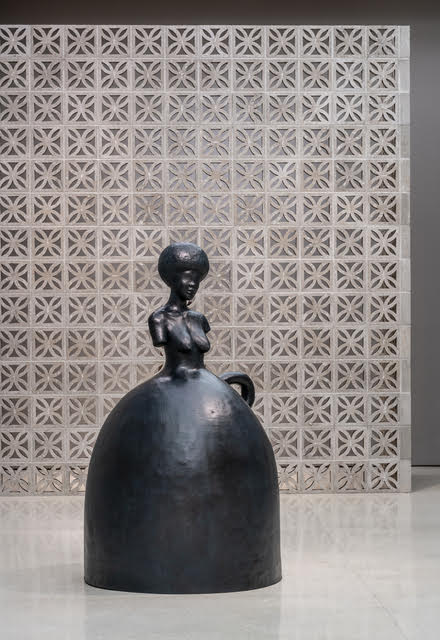
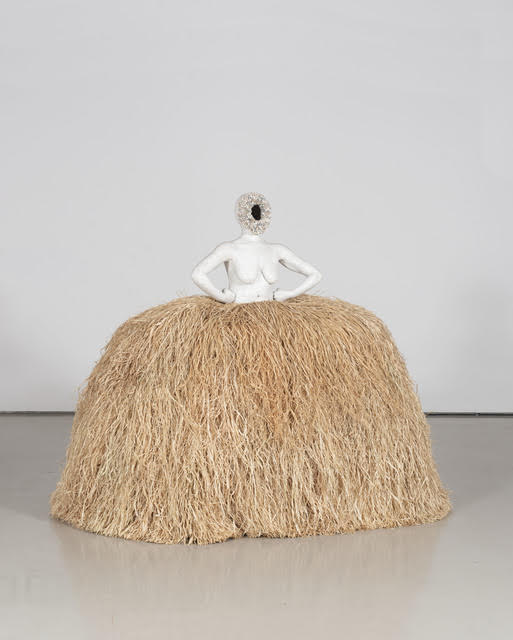
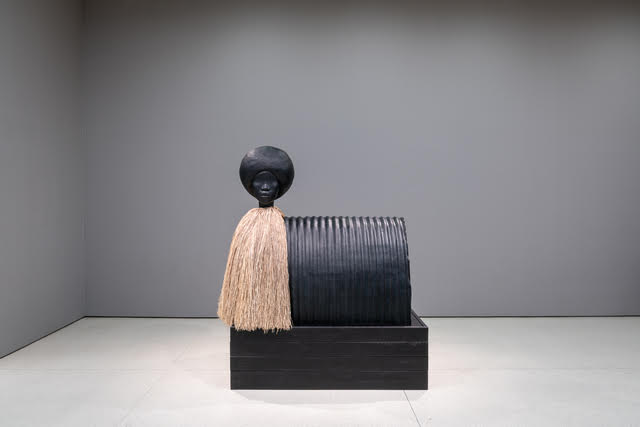
Since the earliest days of this country’s founding, Black women have taken on monumental labors while suffering monumental dispossession. The force of what Black feminist theorist Hortense Spillers calls, after Angela Davis, “ungendering” alienates Black women from the symbolic and material cultural logics that protect women while naturalizing their exploitation. We see this at play in the early demand for Black women to work the fields, bear children, do domestic work, and act as wet nurses and nannies for white children during legalized slavery, expectations and extractions of labor placed on no other body. In 2020, the fact that Black women who experience gender and racial discrimination are expected to do “diversity” work in professional and personal life, while still only making, on average, 62 cents to every dollar made by a white, non-Hispanic man, suggests an afterlife of racialized ungendering is still operative today. Yet both Spillers and Davis note that this distorted state of affairs has also generated radical change.
For Davis, the “deformed quality of equal oppression,” during slavery led to a “profound consciousness of resistance”2 And for Spillers, the radical ungendering of Black women and the “different cultural text” that it produces makes possible an “insurgent ground as female social subject.”3 From Harriet Tubman to Ida B. Wells, from Marsha P. Johnson to Toni Morrison, from Assata Shakur to Patrisse Cullors, Black women have been at the forefront of radical change in arts and politics even as they have faced some of the most extreme forms of oppression.
As we continue to pull down physical statues, what else must come down to bring us closer to the dreams that animate the eloquent existence recent (and not-so-recent) statues of and by Black women make evident? As we attend to what should come up in physical form, what values need to be established (and abolished) to rectify a history of monumental neglect and honor a history of monumental existence? The beauty of these Black women’s monuments and monumental labors, seen and unseen shame as much as they inspire.
